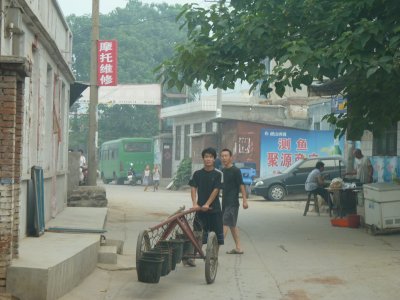
This is the modern, highly efficient, night soil removal mechanism.
We took a wide berth to avoid tipping anything over.
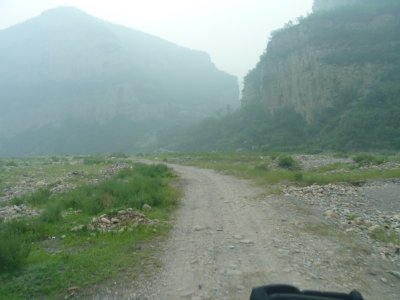
We'd passed lots on the way in. This time there was a queue of trucks and a blocked road.
We took the detour.
Doug asked if we are on schedule. Yes, more or less.
We leave China for Mongolia on the 17th August. We'll arrive in Beijing either Sunday afternoon (7th) or Monday morning (8th) to hopefully obtain Mongolian visas and see the Forbidden City. Then we'll head to the border via the Great Wall with a few days for contingencies.
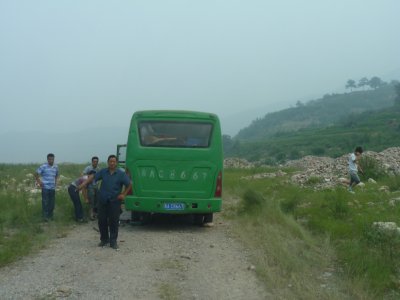
A tyre was being replaced.
It looked like previous vehicles had gone round to the right.
The guy closest is directing us to the left.
Ali hopped out and checked the ground - large rocks either way - and off we set. Just crawled round in 4wd.
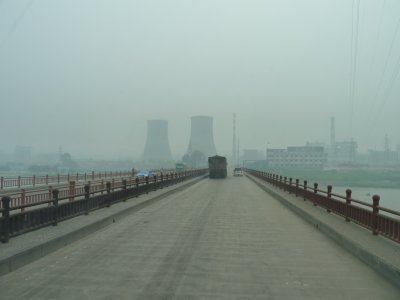

We'd stopped to ask directions. Before we could say Jack Robinson - or the local Chinese equivalent - our new guide and passenger had hopped on their motorbike and we followed.
They were very excited, all smiles, both talking at once, but fortunately both with the same directions when we finally said goodbye!
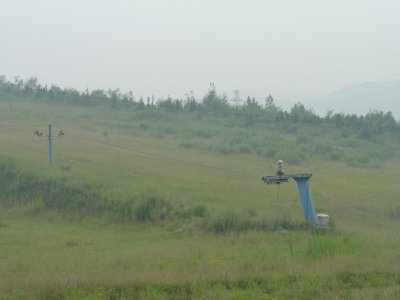
Learners' slope really with two ski tows. About 150m each up a gentle slope.
Neither working, looked like they'd been moth balled.
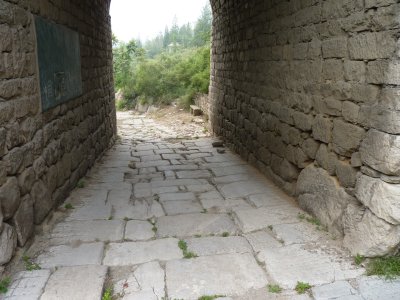
Emperor Qin, of Terracotta Warriors fame, who unified China, came this way.
Apparently he died on the road. The story goes that his attendants didn't want the bad news to foment a power struggle so told no-one and carried the body to Beijing.
The smell was disguised with seafood.
Two of his standards were the distance between wagon wheels and the width of the road (remember how to unify a nation 101?).
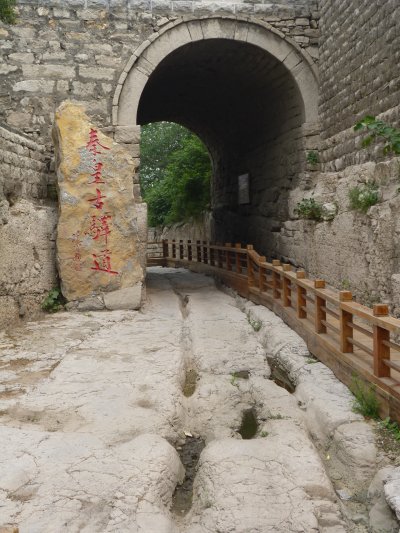
The road was built in about 200 BC.
This is the East Gate. The road came through a pass.
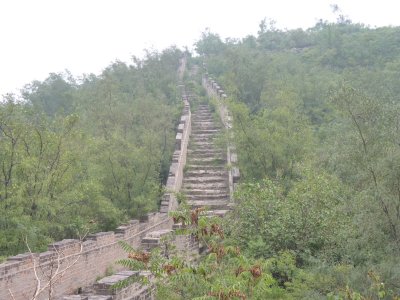
There had been a few battles over the years but this was in preparation for the French.
Apparently the attraction of 2000 years supply of coal in Shanxi was too much for the Europeans and various attempts were made by "the allies" to get some of the commercial action.

Originally, when the ruts became too deep the surrounding rock was removed.
Thus the really ancient road is lower than the newer stuff laid over the top.
In some places about 4m lower.
There were about 4,000 km of similar roads. About the size of the Roman road network.
With more corners.
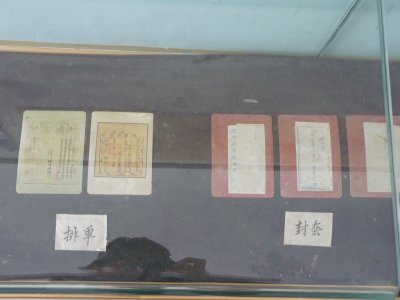
It began to look like a postal service from around 1300 BC.
It was progressively unified until it became China Post.
On the right are envelopes.
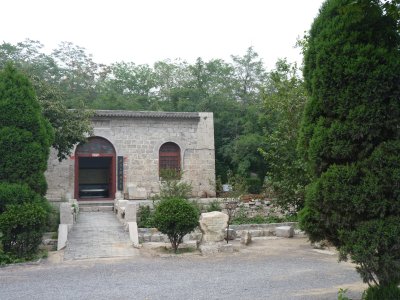
It seems the road was used by Emperors, Businessmen, Traders and Postmen.
We've seen no historic evidence of "public transport" in any of our travels. We presume there must have been some but perhaps it simply wasn't organised as such.
Also we haven't figured out how people traveled long distances with the same horse or porters. Our mindset is from a country that had "stage coaches" with fresh horses available for each stage.
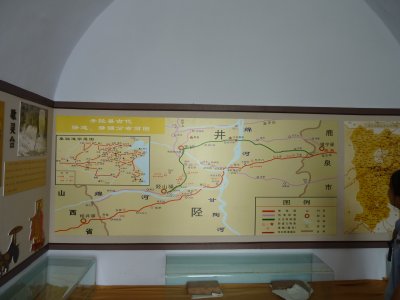
It extended from Beijing to Xi'an.
Presumably via Pingyao so the banks could make some money.
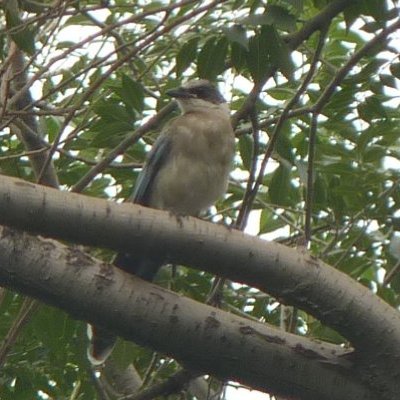
One of them stayed still long enough to be photographed.
Just.
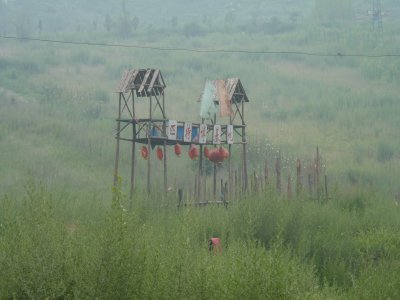
Not far from the ski field.
It had a similar air of dereliction.
Perhaps just the off season.
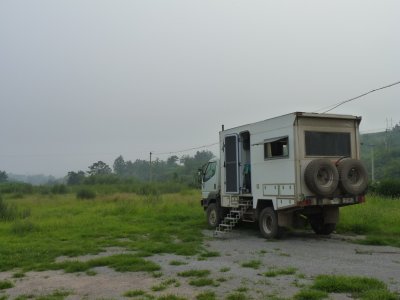
No people.
We didn't find the ticket office while exploring the ancient road. We saw very few people. The car park is unattended.
We've become so used to always being in sight, and sound, of people that we are almost uncomfortable without them.
But we'll persevere - it will probably be nice to have a bit of greenery, no lights, no loud music, no tannoy. Just peace and quiet.